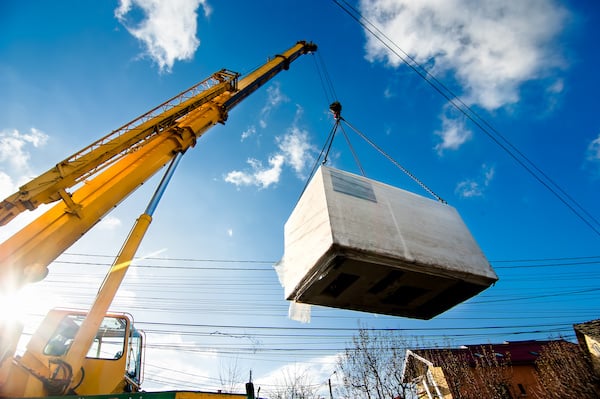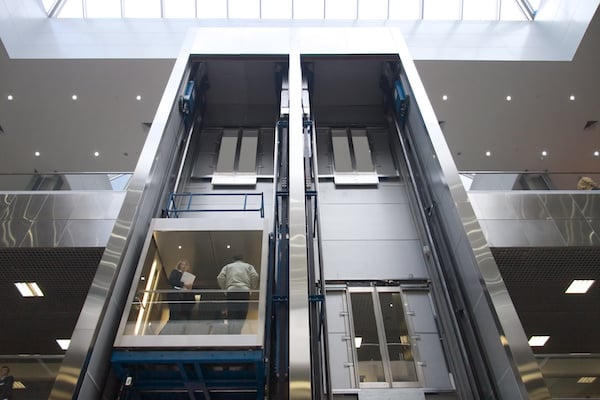Hydraulics play a crucial role in keeping the world functioning smoothly and are often referred to as the hidden gem of modern technology. Despite their inconspicuous nature, hydraulics are integrated into numerous aspects of everyday life, spanning a range of applications. From vehicles to construction machinery, hydraulic systems power and enable essential functions.
Gasoline pumps
Integrating hydraulics in gas station pumps brings numerous advantages. One notable benefit is the improvement in speed and efficiency. By harnessing the power of hydraulics, fuel dispensing becomes faster and more streamlined, allowing drivers to refuel vehicles promptly. Additionally, implementing hydraulics in gas pumps ensures a user-friendly experience. The hydraulic system simplifies the operation of the pump, allowing drivers to handle the fueling process without physical exertion. 
Beyond convenience and efficiency, hydraulics in gas station pumps also contribute to environmental conservation. The hydraulic system plays a crucial role in reducing oil and gasoline spills during the fueling process. By precisely controlling the flow of fuel, hydraulics minimizes the risk of accidental spills, preventing contamination of the surrounding environment.
Vehicles
A car's braking system relies heavily on hydraulic mechanisms to facilitate deceleration. Specifically, the hydraulic system moves the brake fluid. When the brake pedal is pressed, it activates the rod and piston inside the master cylinder, causing the vehicle to slow down and come to a stop gradually.
Many vehicles incorporate hydraulic suspension systems, adding an extra dimension of comfort and performance to the driving experience. Hydraulic suspension systems enable the vehicle's height to be dynamically adjusted, allowing for smooth and precise alterations in the suspension setup. By utilizing hydraulics, these systems provide a level of adaptability that helps mitigate road vibrations and uneven surfaces, ultimately enhancing ride quality, stability and safety.
Dishwashers
Dishwashers are common household appliances that efficiently clean dirty dishes. Not all dishwashers have hydraulics, however those that do utilize hydraulic systems to adjust the water pressure inside the machine, thereby improving cleaning performance. Additionally, some dishwashers incorporate hydraulics to reduce noise level, making them more desirable household appliances.
Construction machinery
Hydraulic technology plays an extensive role in the construction industry, providing power to various machines. Among these machines are cranes and forklifts, which are indispensable tools for lifting and relocating heavy materials. Forklifts that are used outdoors have a series of hydraulic systems that use special pressurized fluid to power the engine, along with lifting heavy loads.
 Cranes also depend on multiple hydraulic systems with their ability to lift large-scale materials weighing up to 40 tons. These hydraulic components work in tandem to generate the necessary strength at specific points during the lifting and handling process. Cranes can precisely control their movements and maintain stability while dealing with heavy loads.
Cranes also depend on multiple hydraulic systems with their ability to lift large-scale materials weighing up to 40 tons. These hydraulic components work in tandem to generate the necessary strength at specific points during the lifting and handling process. Cranes can precisely control their movements and maintain stability while dealing with heavy loads.
Hydraulic technology ensures the safe and efficient operation of these machines, allowing them to withstand the demands of the construction environment. With multiple hydraulic systems at work, forklifts, cranes, dump trucks, bulldozers and other construction equipment represent the power and reliability that hydraulic technology brings to the construction site.
Airplanes
Hydraulic systems play an irreplaceable role in the aviation industry, enabling the efficient and rapid transportation of people and goods across vast distances within remarkably short timeframes. Although most individuals may not have direct daily interactions, airplanes are constantly in motion, tirelessly transporting essential goods to cater to the needs of large populations.
Hydraulic technology is used to lower landing gear and apply brakes to slow down planes on the runway, ensuring safe landings without causing damage to passengers or cargo. Hydraulic technology is also used to adjust wing flaps, enabling pilots to control the aircraft's altitude by manipulating pressurized fluid hydraulic systems.
Elevators
While some elevators do not use hydraulics, the ones that do operate through compression systems to facilitate fluid transportation and enable vertical movement. In contrast to conventional overhead hoisting systems, hydraulic elevators depend on specialized compression mechanisms to accomplish their tasks efficiently.

Conclusion
Hydraulic systems represent the hidden gem of modern technology, silently powering and enabling essential functions in various aspects of life. From the efficient and environmentally friendly fuel dispensing at gas stations to the reliable braking systems in vehicles, these applications of hydraulics demonstrate its pervasive presence and remarkable impact on everyone’s daily routine.

